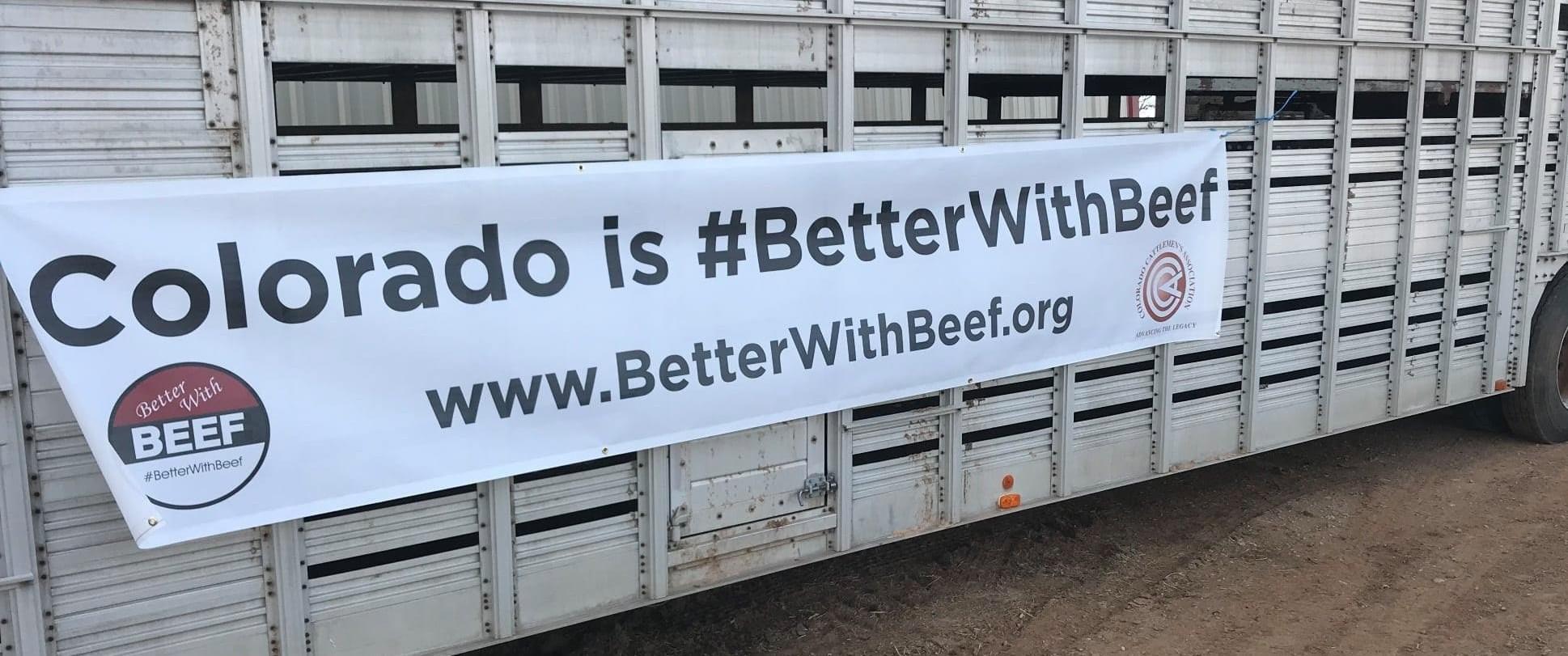
5 minute read
More Than Meat, Colorado Agriculture Unites to Celebrate Industry


Advertisement
Page 4 Lost Creek Guide April 7, 2021
More Than Meat, Colorado Agriculture Unites Growing Beans - Pole or Bush
to Celebrate the Industry and Support Under from Burpee Seed Co Beans are one of the easiest vegetables for people to grow and they are as popular as Served Coloradans ARVADA, Colo - It was a weekend of reconnecting, celebrating our livestock production, and uplifting those in need throughout Colorado and neighboring states as the agriculture industry celebrated “Meat In day” on March 20th. Rather than villainizing meat protein sources, producers and consumers alike rallied to show their support for agriculture and livestock production. Across all of Colorado, March 20th was a day of celebration and appreciation for the agriculture industry. More than 35 cities and counties signed proclamations in order to promote the importance of agriculture in Colorado; designating March 20th as “Cattlemen’s Day,” “MeatIn Day,” or other similar designations. Colorado Cattlemen’s Association (CCA) expresses our sincere gratitude for all those who hosted and participated in the various gatherings around the state. The strength of the industry is rooted in your communities, and your voices were heard and your contributions are recognized statewide. To this extent, this movement and support for the agricultural industry transcended beyond rural areas as urban communities and consumers also rose to the occasion to unite behind the contributions of agriculture. “While we saw rural Colorado turn out in tomatoes and peppers. Within the bean group there are those that are grown for the dry bean and those that are grown for the green bean which is served as a vegetable. Green beans are all climbers to some extent but they are generally classed as being pole beans, which grow five or six feet, or bush beans which only grow a foot or two. As a general rule, the pole beans, particularly the scarlet runner beans, do much better in cooler summers and bush beans do well in moderate to hot summers. There are numerous types of beans in both growth habits and a few, such as Blue Lake, can be found in climbing and bush form. The broad, flat green string bean that is thinly sliced French style is a pole bean and most of the beans that are harvested for drying such as kidney beans and navy beans are pole beans too. Most of the pencil thin Filet beans are bush beans. Almost all the other beans, whether you want purple, yellow or green, can be found in both bush and pole forms. Whether you grow pole beans or bush beans you will have an abundant harvest if you remember to pick regularly. Most beans are harvested before the seed grows too large, and the overall harvest will continue for many weeks if the beans are picked every day or so. Obviously if you intend to harvest the bean seed for winter casseroles and meals, then you will let the beans mature and dry on the vine, before you pick them. For growing beans, you will need a sunny spot and well drained soil. Wait until well after the last frost before you plant the beans as they all like warm soil for germination. Plant the seeds about an inch below the surface and keep watered until the seed germinate. The seeds are large enough that even small children can help to plant the beans. Once started, the beans will grow quickly and you will get the first flowers then fruit in about 55 days. Pole beans take an extra week or two before they are ready to harvest, primarily because the energy is put into growing the vine before the flowers are produced. Probably the biggest difference between bush beans and pole beans is the amount of land you need to grow a good crop. Bush beans are usually planted in linear rows and the double row will support each other as they grow. Pole beans are planted against a trellis, or tepee arrangement which can be placed on smaller plots. Pole beans can also be used to make a quick screening fence around an area or into a play house for young children. Try mixing the Purple King pole bean with a nasturtium for a colorful wall of the playhouse that is both fun and good to harvest. record numbers and with record donations collected, we were also encouraged by the strengthening of a bond between metropolitan and rural voices around this effort,” said Janie VanWinkle, CCA President. “We are appreciative of the support around the Meat In movement and look forward to continuing to strengthen this partnership across the state and nation into the future.”
With more than 75 events, plus countless restaurant and retailer specials, meat was on the menu and tables across the state. At the 75 events alone, more than 25,000 people were offered complimentary barbecue meals, including more than 1200 food insecure Denver residents. However, a Meat In day meant more than just enjoying a delicious meal with friends, family, and neighbors. “Many events emphasized supporting and feeding the food insecure. Donations were collected at varying events to support their local communities and the broader beef industry,” said Terry Fankhauser, CCA Executive Vice President. “The tally is ongoing, but as of late, over $300,000, supporting need-based causes, has been collected in the name of Meat In day.”
On the backside of this celebratory movement is a proposed ballot initiative that would drastically harm animal agriculture and consumer access to affordable food in Colorado. Initiative #16 would limit beneficial animal husbandry practices and stipulate unrealistic harvest requirements for livestock. Now more than ever, livestock producers and consumers need to come together and support Colorado from pasture to plate.
The unity that was showcased with the Meat In movement across the entire state is encouraging for bridging between agriculture and urban audiences. Let this momentum around the Meat In movement serve as an example for how Coloradans can work together for a viable, beneficial future.
Colorado Cattlemen’s Association’s (CCA) is the state’s premier cattlemen’s association serving as the principal voice and advocate for Colorado beef production. CCA accomplishes this through its vision of “advancing the legacy” of beef production for its members by ensuring a dynamic and profitable industry that provides growth and opportunity for future generations.









